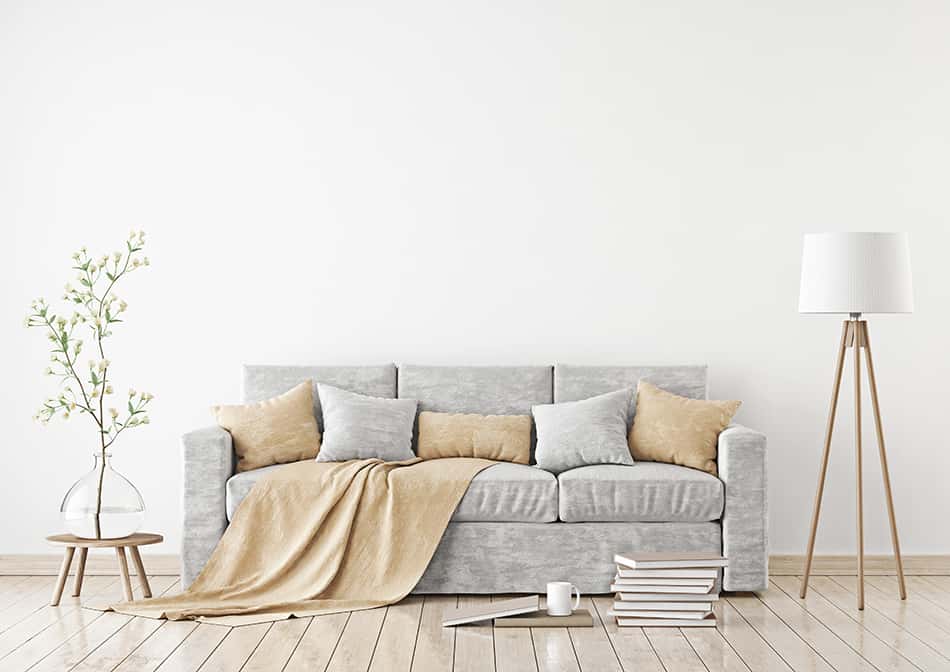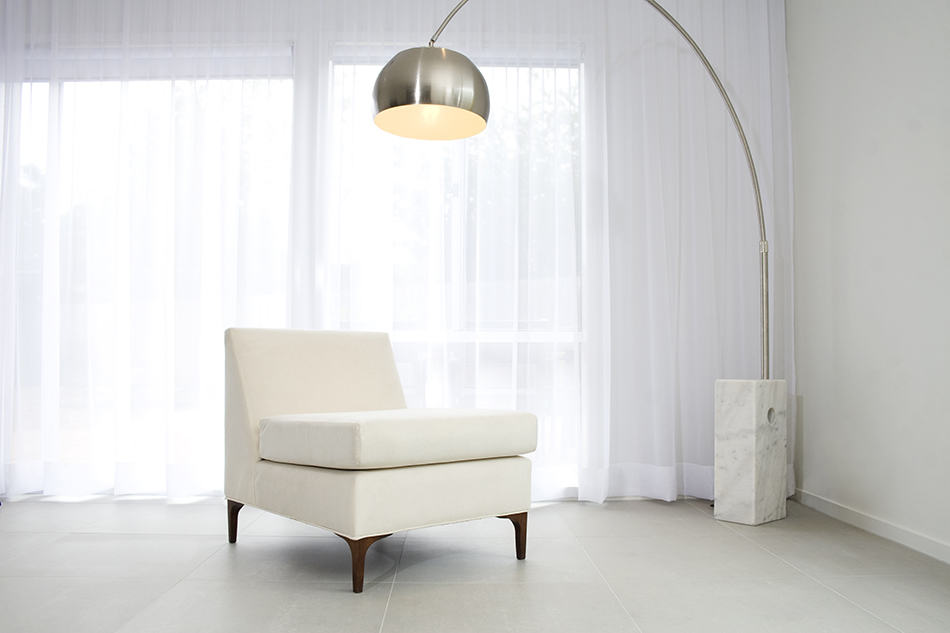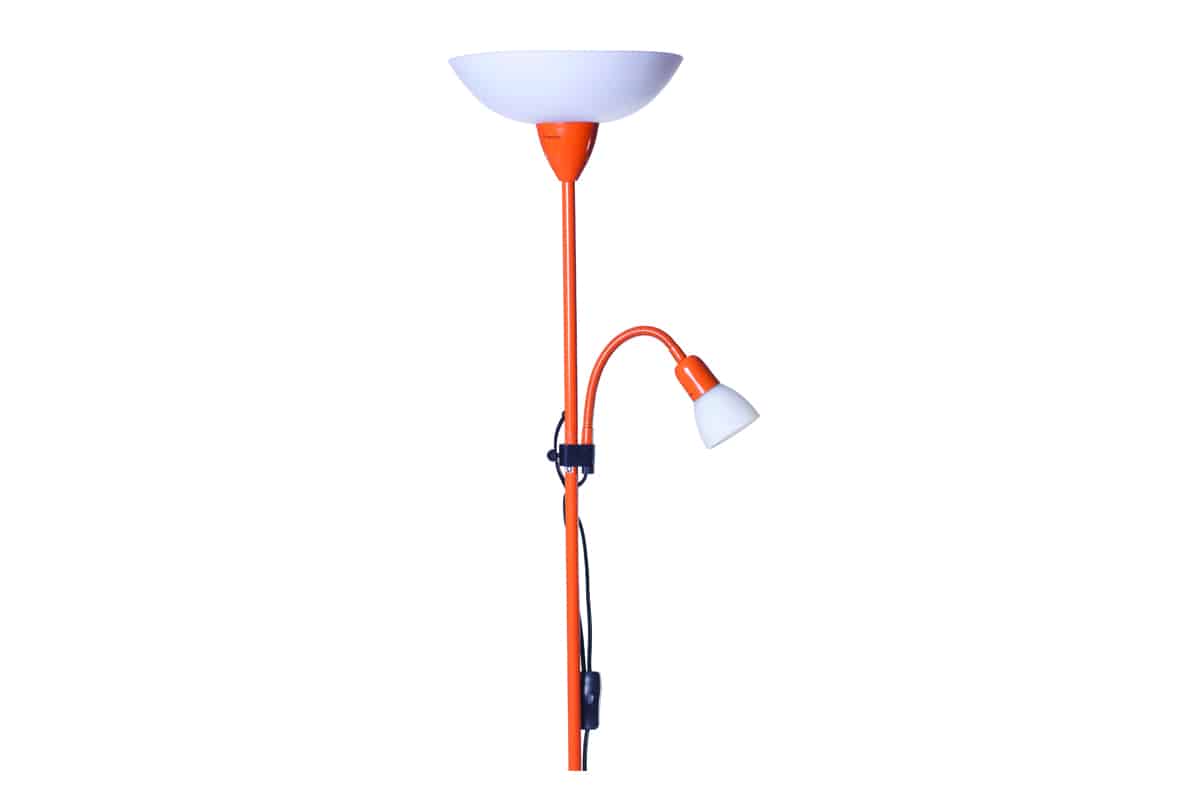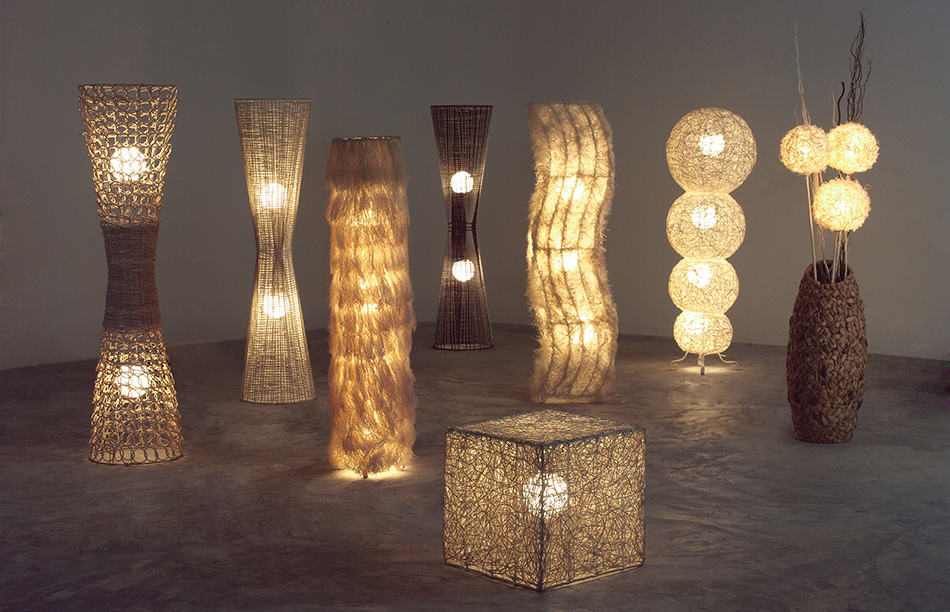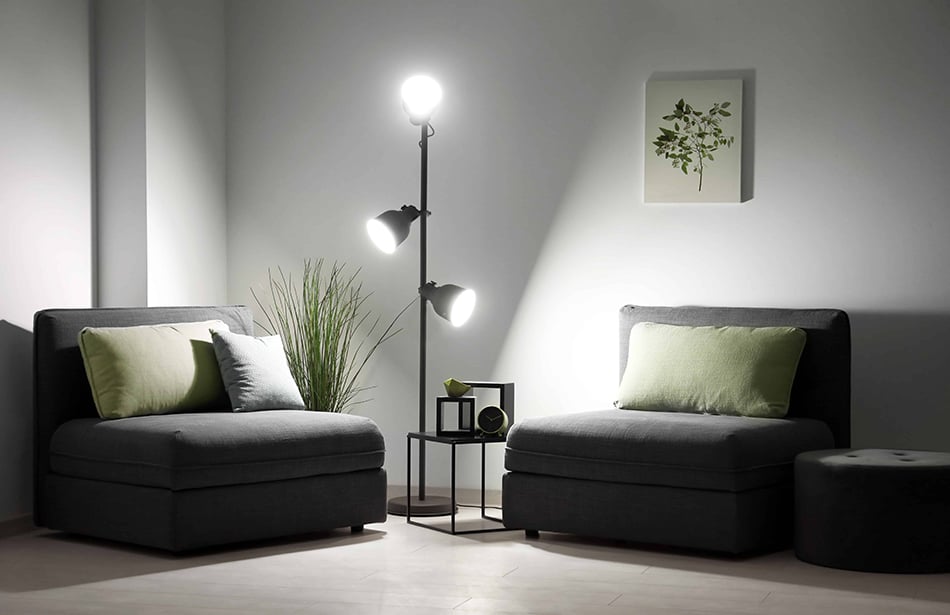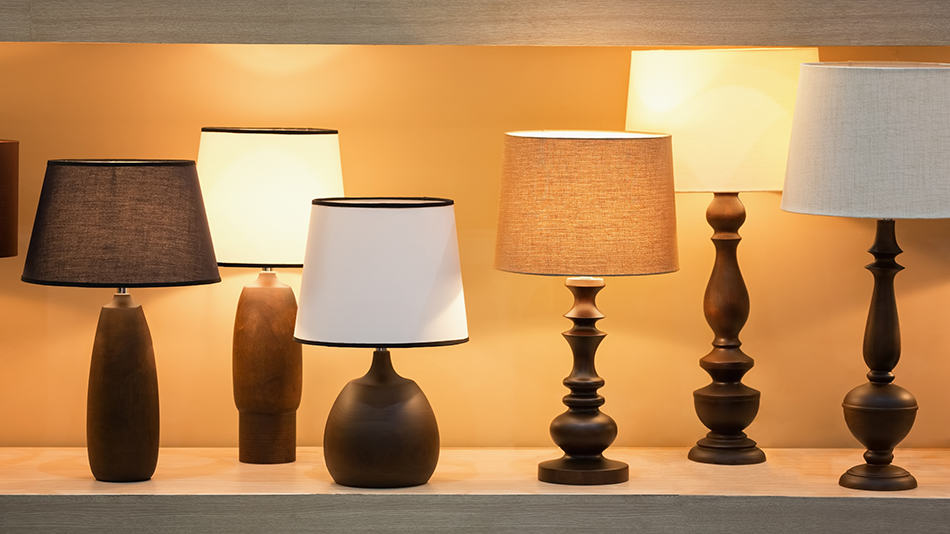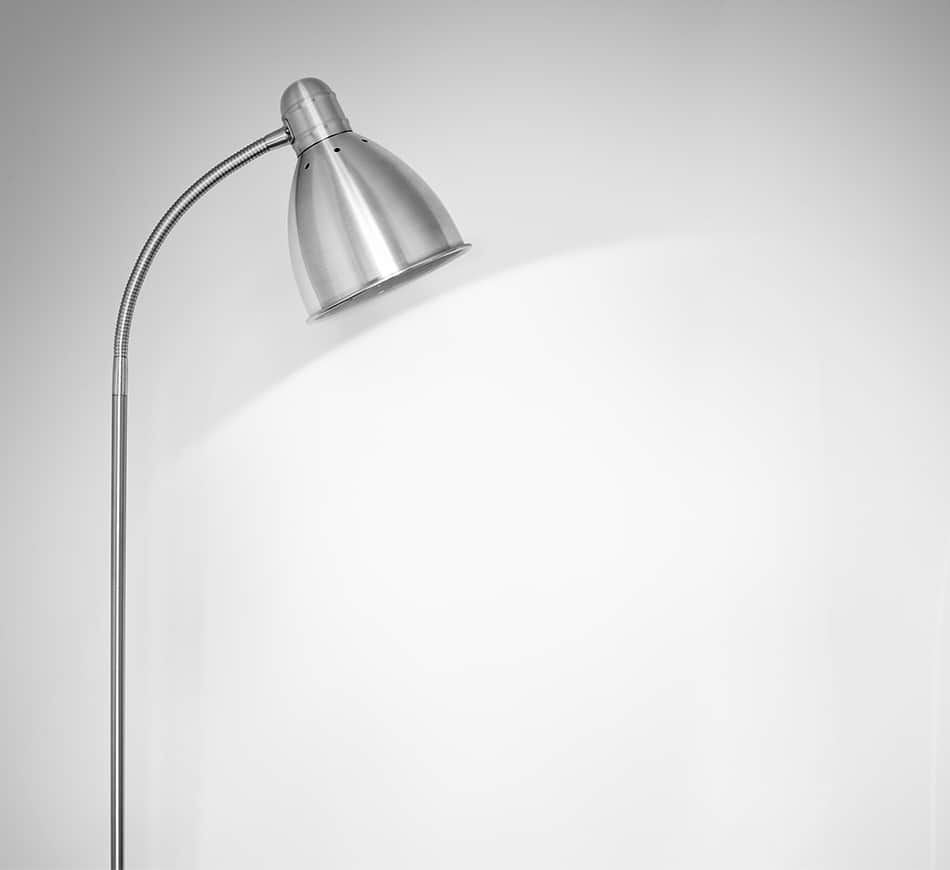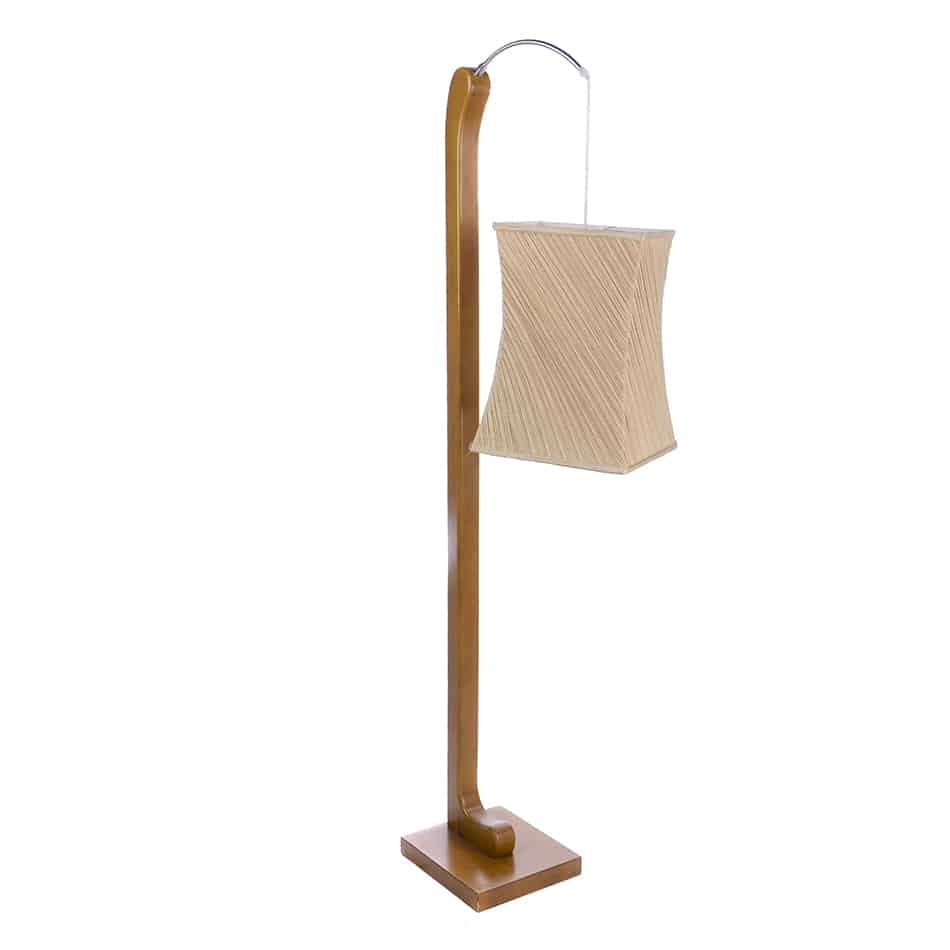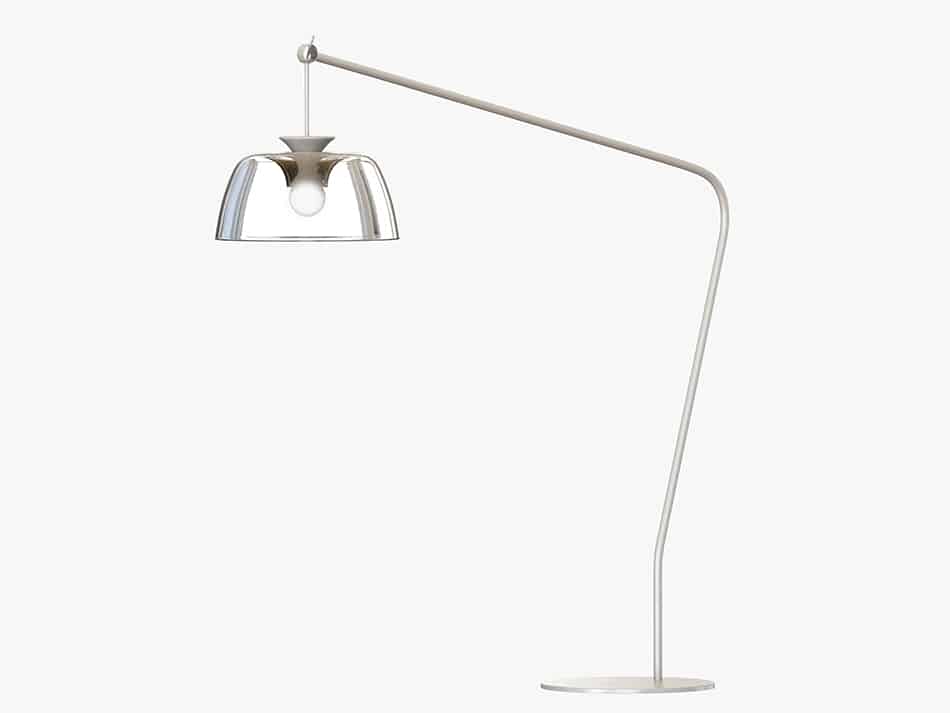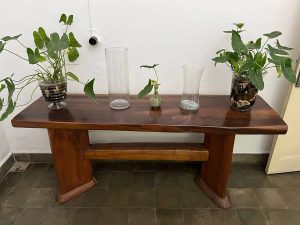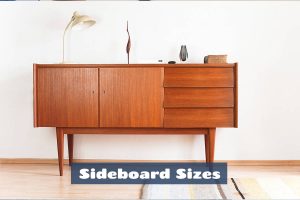The type of lighting you have in a room will have a dramatic effect on the type of atmosphere you create. Low lighting is more intimate, cozy, and romantic, while bright lighting makes a space feel fresh and open.
In some parts of the home, such as in the kitchen for preparing food or by the bedside for reading, you’ll want to ensure there is bright lighting for maximum functionality.
Here we look at floor lamps that will give off the most light.
Types of Floor Lamps
Arc
An arc floor lamp is one that has a vertical upright stand, which arcs over at the top so that the light bulb is hanging downwards. These types of floor lamps are great at providing a lot of angled light in a specific area.
For example, you could position an arc lamp next to an armchair to illuminate that space and provide the most light for reading. These types of lamps can also be usefully situated next to the side of the bed if you don’t have a bedside table where a table lamp would usually go.
You can angle the light so that it brightens up the pillow area of your bed while you read. Many arc lamps will have adjustable heads in order for the user to specify the exact direction the light is aimed at.
These types of floor lamps are popular in reading areas as the light shines downwards over a person’s shoulder to help them better see their book or magazine. They are great for providing the most light in a small area for the specific purpose of reading but may be less useful in other scenarios.
Torchiere
A torchiere floor lamp is also known as an uplighter. This is because it points the light upwards, illuminating much of the room without shining light directly into anyone’s line of vision. These lamps have a long, vertical stand with a lightbulb at the top, surrounded by a light shade. The light shades on torchiere floor lamps are generally metal though in some cases might be glass.
Most commonly, the light shade will be shaped like a bowl, directing the light upwards. These types of floor lamps tend not to be adjustable, so the light shade cannot be angled in a different direction. They work well in rooms with high ceilings as they can illuminate the entire upper half of the space when used in conjunction with a high-wattage bulb.
These floor lamps are very versatile and are suitable for use in a wide range of situations, including as accent lighting or as the main light in a room. They can also be used with lower-wattage bulbs if you want to create a cozier atmosphere.
Tower
Tower lamps are a stylish type of floor lamp which have an architectural look. These vertical lamps usually have a shade that extends from the top of the lamp all the way down or with just a little portion of the stand showing near the base. The type of shade on a tower lamp will substantially affect the type of light it gives off.
Fabric shades on tower lamps will create a softer, more diffused light, while glass tower lamps can give a brighter glow. These are popular lamps for accent light in a room, but they do not give enough light to warrant being the main light source in a space.
Tree
A tree floor lamp is also known as a multi-way floor lamp. These lamps feature long, upright stands, with several ‘branches’ which have individual bulbs at the ends. This type of floor lamp generally takes a modern design, with metal lampshades, wire lampshades, or even bare bulbs.
The fact that these floor lamps feature numerous sources of light from several different bulbs, they can be a great choice when looking for a floor lamp that gives the most light. This quality can be further increased if you get a tree floor lamp that is adjustable, as you can direct each branch in a specific direction to aid in better vision.
Adjustable tree lamps can be very versatile, giving you angled light for reading or performing close-up tasks such as sewing, but they can also be used to give off a vast amount of light across a whole room.
Swing Arm
A swing arm floor lamp is quite self-explanatory. It has a long, vertical stand with an outward reaching arm at the top which can swing around from left to right. Some swing arm floor lamps also feature extendable arms or flexible arms which can be bent in different directions.
Like an arc floor lamp, these work well for creating the most light in a specific area, such as for reading or writing. The type of light they create will be predominantly down to the lampshade used. A fabric shade will diffuse the light for a softer glow across a wider area, while a metal bowl-shaped shade will give a more intense light across a smaller space.
Chandelier or Candelabra
These types of floor lamps feature the traditional chandelier or candelabra style lighting fixed to the top of a vertical stand instead of hanging from above. They can create a great amount of light because they utilize numerous individual light bulbs all at once, generally with a minimum of six bulbs.
These floor lamps can have miniature shades on each bulb, either made from fabric or glass, depending on the style. Chandelier or candelabra floor lamps with traditional glass fixtures will create a more dramatic glow than those which are diffused by fabric shades.
These can bathe the room in light if bright bulbs are used, essentially working as the main source of light in a space. They are less effective at creating angled light, which you would want for needlework or reading.
Floor Lamp Shade Options
The type of lampshade on a floor lamp will significantly affect the type of light given off. The most popular types of lampshades used in conjunction with floor lamps include:
Fabric Lamp Shade
Fabric lampshades are commonly found on floor lamps in various styles and designs. Fabric shades tend to be amongst the most affordable types of lampshades, and there is a vast selection of colors, patterns, sizes, and shapes available. For a modern look, you can go for a cylinder fabric shade, which surrounds the sides of the light bulb at a vertical angle all of the way around.
This type of shade diffuses the light for a soft glow at the sides while also directing bright light directly upwards to the ceiling and downwards to the floor. This shape of shade is great for creating the most light while still preventing direct light from shining into anyone’s eyes.
Another modern shape is the ball fabric lampshade, which is shaped like a sphere and encircles the whole light bulb on a floor lamp. These shades do not let any direct light escape and instead diffuse all of the light to give a more subdued, intimate glow, making them one of the least effective types of lampshade if you want the most light.
For a more traditional fabric shade, choose a tapered style that looks similar to a bell shape. These are narrow at the top and wider at the base, therefore creating the most light at a downward angle.
Metal Lamp Shade
Metal lampshades can be a good choice for floor lamps if you want the maximum amount of light. Solid metal shades, such as those shaped like bowls, are great for creating direct angled light, while open metal shades allow the light to spread more evenly across a space.
Wire Lamp Shade
Wire lampshades have become popular in recent years as they have a modern look that works well in industrial and Scandinavian style interior decor. These lampshades are made from metal wire and commonly take a geometric pattern, with wide-open areas in the shade where light can be emitted directly from the bulb.
The term ‘lampshade’ is actually fairly inaccurate when it comes to the practicalities of wire shades, as they create very little shade at all and instead are more of a decorative feature. When used with a bright bulb, these are great for creating the most amount of light because they do not restrict any glow from the bulb.
Glass Lampshade
A glass lamp shade can vary in terms of the light it gives, depending on whether the glass is clear or frosted. Clear glass shades will allow the full benefit of the light bulb beneath, while frosted shades will create a softer glow.
To achieve the maximum amount of light, a clear glass lampshade will work best on a floor lamp for a balanced well-lit room, while a frosted or colored glass lampshade will be best if you want to create a bright light in a smaller, targeted space.
